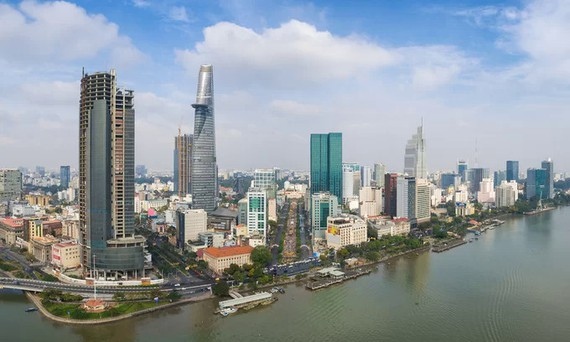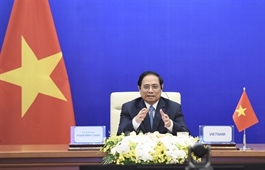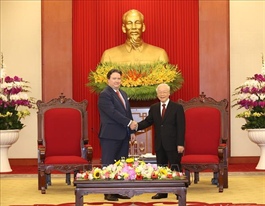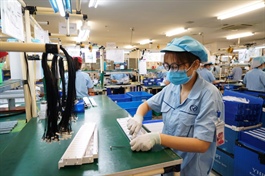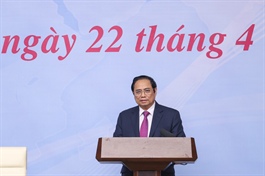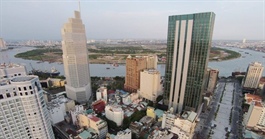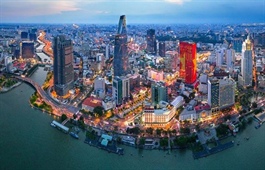Development of Hồ Chí Minh City needs high motivation
Development of Hồ Chí Minh City needs high motivation
It is imperative that there is a deep motivation and enthusiasm behind the implementation of a development plan of any city.
Ảnh minh họa. |
If a development plan is executed without the necessary motivation, then the city planning loses its earnest will to maintain a growth momentum and could then possibly fall into a state of prolonged stagnation. Hence, it is of utmost importance to see that the developers find and build several factors that act as the driving force to maintain a momentum of high motivation at every stage of the development plan.
Motivation in the past
During the period 1986 until 1995, the main driving force for the development of Hồ Chí Minh City was the transition phase towards a market economy, which inclined towards the private sector. This was the strongest motivation for Hồ Chí Minh City to regain its vitality after a long period of crisis and turmoil.
From 1975 until 1985, the private sector was considered very weak. Factories remained closed for long periods of time because they did not have sufficient raw material. Trading enterprises at that time had to close, but ten years later they were allowed to officially reopen to participate freely in the market. At that time, this was the most important driving force for Hồ Chí Minh City to eventually become the largest economic hub of the country.
From 1995 to 2002, the main driving force was the reform and open policy that allowed an integration into the world economy. In this the important milestone was the normalization of relations with the US and the lifting of the embargo by the United Nations. The gateway to the outside world was now open. During this period, a wave of foreign investments flowed into Hồ Chí Minh City, and gradually began to increase even more rapidly. The first successful project was the construction of the Tân Thuận Industrial Park in 1991, followed closely by nearly 20 EPZs and IPs. This created a strong base for the export of a diverse number of goods from the country.
During the period 2002 until 2015, the main driving force was land. This was a boom period for the real estate market when new residential areas began to spring up across Hồ Chí Minh City such as Phú Mỹ Hưng, Thảo Điền, An Phú, and Bàu Cát urban areas. Hundreds of modern apartments and office buildings appeared in the central areas of the City and gradually spread to new urbanized districts.
At that time, the land fund of Hồ Chí Minh City was still abundant, the price was low, and the sale of plots was an exciting venture for new developers. Land in new urbanized districts such as Bình Tân, Tân Phú, District 7, District 9, and also suburban districts of Hóc Môn and Bình Chánh, were beginning to skyrocket in prices. This form of urbanization gradually began to spread outwards from the center of the City to the districts along the traffic axis.
Over the last five years, it is a fact that the above mentioned motivational factors no longer exit, and no longer have a powerful lever to create breakthroughs in the development of Hồ Chí Minh City. Since then, Hồ Chí Minh City has fallen into a state of lethargy. Now in these last two years of the Covid-19 pandemic the City economy has been severely affected and the GRDP growth was sometimes negative at 24.97%. Businesses and the population at large are rather exhausted from prolonged lockdowns. This has led to big real estate companies such as Novaland, Nam Long, Hưng Thịnh, and Bitexco to move their interests to some neighbouring provinces.
New development plans
The above factors prove that Hồ Chí Minh City needs to find new motivational grounds to combine with existing plans and make a strong move towards growth and development. Accordingly, the city needs to quickly and drastically switch from broad-based development to in-depth development, focus more on quality rather than quantity, and not on extensive but on intensive farming on narrower areas with less labour. Therefore, the driving force to promote Hồ Chí Minh City in the immediate and long-term future rests on the transformation into a digital society.
A digital society is considered the driving force, goal, and foundation of all future development plans. Along with industry, the service system is being forced to transform to a hi-tech world. Digital applications are used in public administration and social management, including population management, environment, social order, safety, and social security.
Industries such as transportation, healthcare, education, and entertainment are also not outside the coverage of the digital society. Digital transformation will participate in every cell of society, thus creating a developed society without abusing the resources. The advantages of cheap land, cheap unskilled labour, easy-to-use consumer market, and high localization are no longer available. Hồ Chí Minh City needs to consider ways to effectively exploit the economy that doesn't use a lot of resources. This should be a strong and consistent motivation for the growth and development of Hồ Chí Minh City in all future plans.
Therefore, in coming years, if Hồ Chí Minh City wants to achieve a continuous growth rate of 6% to 7.5%, it must focus on developing a strong and robust traffic infrastructure. This must be considered the first and most important driving force, because traffic is the lifeline of an urban city. If city areas are congested, and commuting is problematic then investors will turn away. When the goods arrive at the required address, the price will also be inflated.
Hence, it is necessary to complete the intra-regional and inter-regional transport system in a modern style through eight key projects with a total investment of about VND 81,225 bn. These include three ring road projects; expansion of five radial national highways at the gateways of the city in the North, South, East, West, Northwest and Southeast, and with traffic hubs connecting to Tan Son Nhat airport and also to Cat Lai Port and Phu Huu Industrial Park.
At the same time, it is vital to complete the Hồ Chí Minh City-Long Thành-Dầu Giây Expressway with 6 to 8 lanes; build the Hồ Chí Minh City-Thủ Dầu Một-Chơn Thành Expressway covering 69 kms with 6 to 8 lanes; complete the Hồ Chí Minh City-Mộc Bài Expressway with 4 to 6 lanes; and also build the Bến Lức-Long Thành Expressway with 6 to 8 lanes.
Along with all these projects, there is need to restructure the industrial and service system in a modern style based on the requirements of the 4.0 information technology, artificial intelligence, and hi-tech automation. Hồ Chí Minh City must only accept new investors who meet all the criteria, such as those using a smaller space; not using too much labour, especially unskilled labour; those using advanced technology and techniques; whose waste, emissions, wastewater during and after the production process are low; and those using new technology, production techniques, and management methods that are transferable to the localities.


